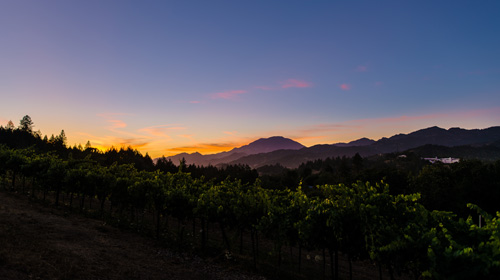Living in Wine Country, it’s sometimes easy to forget that people travel from all over the world to visit the region’s wineries, walk its coastal trails, and dine in local restaurants. As North Bay residents plan their own vacations, it’s a fact worthy of consideration. Local towns have a plethora of options for dining, sipping, shopping and exploring and are perfect for a quick getaway or a Wine-Country staycation. Here’s a look at just a few nearby offerings.
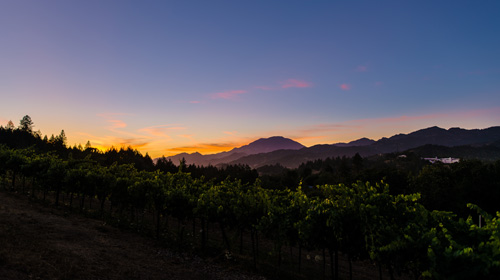 Glen Ellen
Glen Ellen
Jack London knew a good thing when he saw it, and Glen Ellen is no exception. London settled down, wrote novels and built a ranch on what is now known as Jack London State Historic Park. London and his wife, Charmian, fell in love with the area, and today, the place they called home enamors visitors from all over the world. “A lot of tourism in Glen Ellen has to do with people coming to the [Jack London State Historic] park,” says Susan St. Marie, director of program and volunteer management. “On their way to the park, they discover the town. Half of the people who visit the park come to hike. The other half is people who want to experience the history of Jack London and his Beauty Ranch. There are a lot of Jack London fans. We get visitors from all over the world because they know and revere Jack London and his writing and want to visit his home.”
Covering just more than two square miles, Glen Ellen was already thriving before the Londons discovered it for themselves. The town is named after the wife of Charles V. Stuart, an early Sonoma settler who came to California during the gold rush of 1849. He settled in the Glen Ellen area in the late 1860s, where he grew grapes and kicked off what would become a thriving wine region.
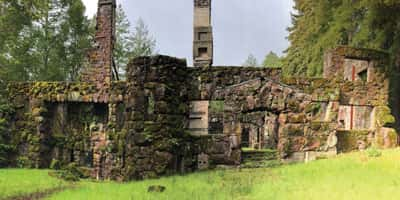
In the early 1880s, the San Francisco & Northwestern Pacific Railroad arrived in Glen Ellen, connecting the area’s wine and other agricultural products to other parts of the Bay Area and the state. Tourists arrived in Glen Ellen as well, and mineral springs in the area were a big draw, claiming to cure a variety of medical conditions as well as offering a place of rest and relaxation for those looking for an escape from the city. “Glen Ellen was a bustling little town [before Jack London made his home here], because of the hot springs,” says St. Marie. “It was a spa getaway for people in the Bay Area. There was a train that ran right through Glen Ellen. I’m told that at one time there were seven saloons in Glen Ellen! The Sonoma Developmental Center [formerly called The Sonoma Home for the Care and Training of the Feeble Minded] has been here since about 1895, before Jack London arrived. It brought people to the area because of visitation and employment.”
Today, with a population of roughly 1,000 people, Glen Ellen is known for its quaintness, its surrounding wineries, and its restaurants. “There is a lot of interesting history [in Glen Ellen],” says Sia Patel, co-owner of the historic, boutique Olea Hotel with her husband, Ashish Patel. “In addition, it’s a really cute town with some fun tasting rooms and great restaurants. Obviously, people come for wine tasting. We are right in the heart of so many wineries and tasting rooms, between Kenwood, Glen Ellen and Sonoma. We’re in the most perfect area of Sonoma Wine Country. There are also great parks. Besides Jack London State Park there is also Sugarloaf, Annadel, Hood Mountain and the Botanical Gardens. So there is a lot of outdoor stuff, too, which is fun.”
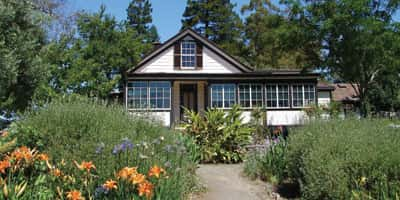
Given that Jack London State Historic Park is such a focal point for visitors, with 30 miles of beautiful hiking trails on Sonoma Mountain, the park aims to serve both tourists and locals in offering a variety of programs and events. “We have a community events manager who puts together more than 40 events a year,” says St. Marie. “The various events bring people in to enjoy the park. We offer hiking events, photography classes, painting classes, yoga hikes, mindful hikes, author readings, book-discussion groups and a whole variety of activities. In addition, our piano volunteers, who play on the weekends, also play for piano concerts on Charmain London’s 120-year-old Steinway grand piano.
In the summer, Transcendence Theatre Company uses the park to showcase their award-winning “Broadway Under the Stars” concert series. Various dinner events are held in the property’s winery ruins, and planned hikes throughout the year can include naturalist-led hikes or moonlight hikes. A few times per year, hikers can use a shuttle, provided by Sugarloaf Ridge State Park, which allows hikers to walk the nine miles from North Sonoma Mountain Regional Park to Jack London State Historic Park.
St. Helena
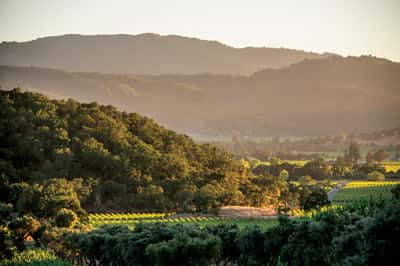 Like Glen Ellen, St. Helena is a small, quaint town that’s steeped in history. Some downtown buildings date from the late 1800s and early 1900s, and an amazing number of highly-rated restaurants flourish in the four-square-mile town that caters to locals and tourists. Centrally located in Napa Valley, St. Helena is also an ideal getaway spot for visitors hoping to taste and buy wine from one of the best Cabernet-growing regions in the world. “St. Helena was home to the valley’s earliest inhabitants, the Wappo Native American people, as early as 2000 B.C., and it’s the site of the first founded wineries,” says Jennifer Chiesa, director of public relations for Meadowood Napa Valley, Northern California’s only 15-Star property (five-stars for hotel, spa and restaurant), as rated by Forbes Travel Guide. Its restaurant, The Restaurant at Meadowood, is also one of two dining establishments in Napa Valley to earn a three-Michelin-star rating for elite excellence in dining. “St. Helena was incorporated as a town in 1976 and today welcomes visitors with three blocks that are listed as a National Historical District on the National Register of Historic Places,” Chiesa says. “Main Street also boasts one of the oldest single-screen cinemas in America, the Cameo Cinema, a staple since 1913.”
Like Glen Ellen, St. Helena is a small, quaint town that’s steeped in history. Some downtown buildings date from the late 1800s and early 1900s, and an amazing number of highly-rated restaurants flourish in the four-square-mile town that caters to locals and tourists. Centrally located in Napa Valley, St. Helena is also an ideal getaway spot for visitors hoping to taste and buy wine from one of the best Cabernet-growing regions in the world. “St. Helena was home to the valley’s earliest inhabitants, the Wappo Native American people, as early as 2000 B.C., and it’s the site of the first founded wineries,” says Jennifer Chiesa, director of public relations for Meadowood Napa Valley, Northern California’s only 15-Star property (five-stars for hotel, spa and restaurant), as rated by Forbes Travel Guide. Its restaurant, The Restaurant at Meadowood, is also one of two dining establishments in Napa Valley to earn a three-Michelin-star rating for elite excellence in dining. “St. Helena was incorporated as a town in 1976 and today welcomes visitors with three blocks that are listed as a National Historical District on the National Register of Historic Places,” Chiesa says. “Main Street also boasts one of the oldest single-screen cinemas in America, the Cameo Cinema, a staple since 1913.”
Author Robert Louis Stevenson spent time in St. Helena as well, honeymooning in the area in 1880 and writing about his experience in the memoir, The Silverado Squatters. The Robert Louis Stevenson Museum in St. Helena aims to educate the public about Stevenson and his works. It also acts as an academic archive, helping researchers around the world learn more about subjects and people related to Stevenson along with his life story. “Most visitors are surprised that such a topic-focused museum exists in the heart of Napa Valley and that we have been here for more than 50 years,” says Barrett Dahl, executive director of the museum. “What I think they like best are the opportunities to see the physical writing and artwork belonging to RLS as well as the story of Stevenson. He led a very interesting life, and it is a fun story to tell people. Many leave [the museum] realizing that Stevenson still influences entertainment and literature today.”
 In the North Bay, there are numerous small, charming towns that are getaway-worthy, and yet each town has its own appeal, its own culture, and its own distinctive offerings. “All the different little cities within Napa Valley have something unique,” says Amy Carabba-Salazar, president and chief executive officer of the St. Helena Chamber of Commerce. “St. Helena has a lot of great history, older architecture and a downtown Main Street with beautiful stores that are unique and interesting. We have Michelin-chef restaurants in the area and beautiful hotels. We have some of the best wineries in Napa Valley. It’s a very warm, welcoming town. When you shop our Main Street, you’re getting businesses that have been there 20, 30, even 40 years. It’s like family.”
In the North Bay, there are numerous small, charming towns that are getaway-worthy, and yet each town has its own appeal, its own culture, and its own distinctive offerings. “All the different little cities within Napa Valley have something unique,” says Amy Carabba-Salazar, president and chief executive officer of the St. Helena Chamber of Commerce. “St. Helena has a lot of great history, older architecture and a downtown Main Street with beautiful stores that are unique and interesting. We have Michelin-chef restaurants in the area and beautiful hotels. We have some of the best wineries in Napa Valley. It’s a very warm, welcoming town. When you shop our Main Street, you’re getting businesses that have been there 20, 30, even 40 years. It’s like family.”
In Wine Country, it’s certainly not unique to be surrounded by excellent wineries, but wineries in and around St. Helena are historic. Charles Krug, for example, is Napa Valley’s oldest wine estate, established in 1861, well before prohibition. It was also California’s first tasting room and offered public tastings as early as 1882.
The St. Helena Chamber of Commerce seeks to proactively set the town apart and offer its visitors unique experiences that are unlike any other. For example, during the winter holidays they collaborated with a pop-up roller rink company to construct a festive “winter wonderland roller rink” and holiday light display in the local park. “We’ve been working hard to do a lot of destination marketing and community events,” says Carabba-Salazar. “Everybody has an ice skating rink, but who has a snowy roller rink? We wanted to offer something different. Doing things like that has attracted so many people to St. Helena.”
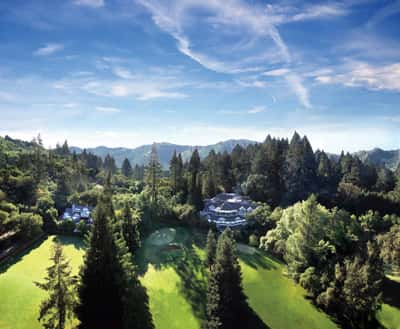 The chamber also launched their “Little Book of Big Experiences.” The wine passport costs $75 per person and offers a $1,000 value with high-end winery experiences, from the months of November through the end of March. The book, published annually during Cabernet season, encourages visitors during what is usually a low-tourism time of year. “It’s a wine pass for 15 high-end winery exclusive experiences,” explains Carabba-Salazar. “These are some of the best wineries in Napa Valley. One experience is going to Sterling and riding a tram up to the top of the winery, getting a private tour and then pairing some rare-batch wines with charcuterie and a cheese platter.” The book, which launched a few years ago, proved to be successful, and the chamber has a hard time keeping them in stock. It drives tourists to the area during a period that many locals agree as being one of the best times of the year to visit Napa Valley. “Cabernet Season is the best time to visit Napa Valley,” says Angela Jackson, director of media relations for Visit Napa Valley. “It’s our slower season, so Cab season offers are available at many of our lodging properties. It’s also easier to secure coveted reservations at restaurants, and visitors have a better chance of meeting the winemakers, since harvest is over. We encourage mid-week visits, or Sunday through Thursday, for the best rates and the most availability.”
The chamber also launched their “Little Book of Big Experiences.” The wine passport costs $75 per person and offers a $1,000 value with high-end winery experiences, from the months of November through the end of March. The book, published annually during Cabernet season, encourages visitors during what is usually a low-tourism time of year. “It’s a wine pass for 15 high-end winery exclusive experiences,” explains Carabba-Salazar. “These are some of the best wineries in Napa Valley. One experience is going to Sterling and riding a tram up to the top of the winery, getting a private tour and then pairing some rare-batch wines with charcuterie and a cheese platter.” The book, which launched a few years ago, proved to be successful, and the chamber has a hard time keeping them in stock. It drives tourists to the area during a period that many locals agree as being one of the best times of the year to visit Napa Valley. “Cabernet Season is the best time to visit Napa Valley,” says Angela Jackson, director of media relations for Visit Napa Valley. “It’s our slower season, so Cab season offers are available at many of our lodging properties. It’s also easier to secure coveted reservations at restaurants, and visitors have a better chance of meeting the winemakers, since harvest is over. We encourage mid-week visits, or Sunday through Thursday, for the best rates and the most availability.”
There are several other treasures right in St. Helena that are a joy for both locals and visitors alike. Bale Grist Mill State Historic Park is a fully restored water-powered grist mill from 1846 that still grinds grain and gives visitors a glimpse into California’s rural heritage. Guests can purchase flour milled on site, and the park hosts a variety of events throughout the year including a pancake breakfast in May, a Harvest Dinner in September, Old Mill Days in October and a Pioneer Christmas in December.
The Culinary Institute of America (CIA) is also located in St. Helena. It’s housed in the Greystone facility, which was built in the late 19th century and was once home to Christian Brothers Winery and is listed on the National Register of Historic Places. While it’s a food and wine education school, it’s also open to the public through their Gatehouse Restaurant, The Bakery Café by illy and its store, the Spice Islands Marketplace. Food and wine enthusiasts can participate in cooking demonstrations, classes, or visit their historic Barrel Room, which has a collection of more than 1,000 corkscrews. “The Culinary Institute of America at Greystone is a ‘must visit’ when visiting St. Helena,” says Jackson. “It’s open to the public and is one of my favorite places to take visitors. They have a beautiful mercantile shop with an expansive collection of cookbooks and cookware.”
Petaluma
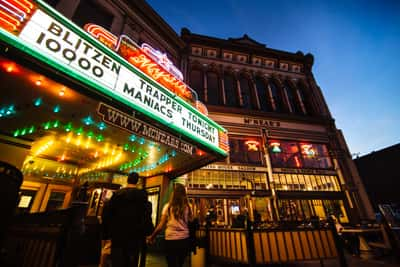 Whereas Glen Ellen and St. Helena are truly in the heart of Wine Country, Petaluma prides itself on being centrally located. It’s the gateway to Wine Country, but it’s also not far from the coast, or even San Francisco, making it the ideal destination for a getaway, whether for a weekend or an extended stay, according to Marie McCusker, executive director of the Petaluma Downtown Association and Visitors program. “When you make Petaluma your home base, you’re perfectly positioned to explore wine country to the east, the redwoods to the north and the dramatic Sonoma coast to the west. Where else can you stay and have these amazing options all within about a half hour’s drive?” she says. “We are also discovering that visitors are staying in Petaluma and taking day trips to San Francisco rather than stay in expensive SF hotels. Petaluma has lodging for every style and price point including some beautifully restored historic properties.”
Whereas Glen Ellen and St. Helena are truly in the heart of Wine Country, Petaluma prides itself on being centrally located. It’s the gateway to Wine Country, but it’s also not far from the coast, or even San Francisco, making it the ideal destination for a getaway, whether for a weekend or an extended stay, according to Marie McCusker, executive director of the Petaluma Downtown Association and Visitors program. “When you make Petaluma your home base, you’re perfectly positioned to explore wine country to the east, the redwoods to the north and the dramatic Sonoma coast to the west. Where else can you stay and have these amazing options all within about a half hour’s drive?” she says. “We are also discovering that visitors are staying in Petaluma and taking day trips to San Francisco rather than stay in expensive SF hotels. Petaluma has lodging for every style and price point including some beautifully restored historic properties.”
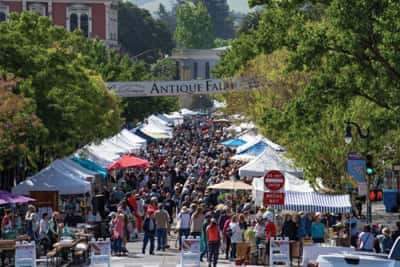 Whether visitors to the town are interested in music, fine dining, brewery hopping, or outdoor activities, Petaluma can accommodate almost any desire. The backroads around Petaluma are known as an excellent cycling destination, Schollenberger Park in the Petaluma wetlands is a bird watcher’s paradise and Helen Putnam Regional Park offers scenic hiking just minutes from downtown. Given that the Petaluma River runs through town, kayaking and paddle boarding opportunities are available as well, and are free to try every Sunday through the Friends of the Petaluma River Organization. The town offers a variety of live music options throughout the year, both indoors and outdoors, and the downtown offers a vast array of boutique and specialty businesses, including an impressive selection of antique shops. Twice a year, Petaluma’s downtown transforms into an outdoor antique market during its bi-annual antique faire, held during the spring and fall seasons.
Whether visitors to the town are interested in music, fine dining, brewery hopping, or outdoor activities, Petaluma can accommodate almost any desire. The backroads around Petaluma are known as an excellent cycling destination, Schollenberger Park in the Petaluma wetlands is a bird watcher’s paradise and Helen Putnam Regional Park offers scenic hiking just minutes from downtown. Given that the Petaluma River runs through town, kayaking and paddle boarding opportunities are available as well, and are free to try every Sunday through the Friends of the Petaluma River Organization. The town offers a variety of live music options throughout the year, both indoors and outdoors, and the downtown offers a vast array of boutique and specialty businesses, including an impressive selection of antique shops. Twice a year, Petaluma’s downtown transforms into an outdoor antique market during its bi-annual antique faire, held during the spring and fall seasons.
Downtown Petaluma itself appears antique, so the setting is a perfect fit. “Petaluma is one of the oldest towns in the state,” says Kathy Fries, board member and former president of the Petaluma Museum Association. “We survived the 1906 quake. To the south, San Francisco was demolished, and to the north, Santa Rosa was flattened. But our west side is on bedrock, so we have our beautiful, old buildings downtown. We have the longest block of historic iron-front buildings west of the Mississippi. You can see the plates from the iron workers.”
In an area historically inhabited by the Coast Miwoks, John Edgar (“Tom”) Lockwood is known as the first western settler, leaving San Francisco to establish a hunting camp in 1850. Eventually, other men arrived, and together they operated a trading post and transported game to San Francisco via the Petaluma River. Petaluma was incorporated as a town in 1858, but it wasn’t until early in the 20th century that it became known as the “Egg Basket of the World.” One of the best ways to learn the history of the town is to participate in a walking tour the museum organizes on Saturday mornings between May and October. “We have costume docents that lead historic downtown walking tours,” says Fries, adding that even locals are often surprised by what they learn on the tour, and it gives everyone a great sense of what Petaluma is like. According to McCusker, “The city is unpretentious with a great blend of old and new, authenticity and fresh, urban energy.”
Now that the SMART train runs through the center of town, Petaluma is experiencing more day-trippers heading north from Marin, or south from Santa Rosa. Visitors come to have lunch, meet friends, see a show, or attend one of the many events the town offers, from the Butter & Egg Days Festival and Parade in April, to the Art and Garden Festival in July, to a variety of holiday events in December. “When you stay in Petaluma, you have everything you need, right on your doorstep,” says McCusker. “You can drive out to the coast, go wine tasting in Sonoma County or Napa, or take the train down to the ferry and take it into the city. It’s a very easy place to be, but you feel like you could be a thousand miles away.”
That is what going on a getaway is all about. It doesn’t matter if it’s in your backyard, as long as it feels 1,000 miles away. Thankfully, we have many opportunities right here in the North Bay for your next weekend getaway.


